Playing with toys is more than just a fun activity for babies; it is also an essential part of their development. As babies grow and explore the world around them, toys play a crucial role in stimulating their senses, promoting physical and cognitive growth, and fostering social interaction.
However, many parents wonder when the appropriate time to introduce toys to their little ones is.
The truth is that no specific age fits all babies, as every child grows at their own pace. In this article, we will explore the factors determining when babies can play with toys and provide guidance on selecting suitable toys based on their developmental stage. Additionally, we will discuss the benefits of playing with toys for babies and how it contributes to their overall development.
Why is Play Important for Babies?
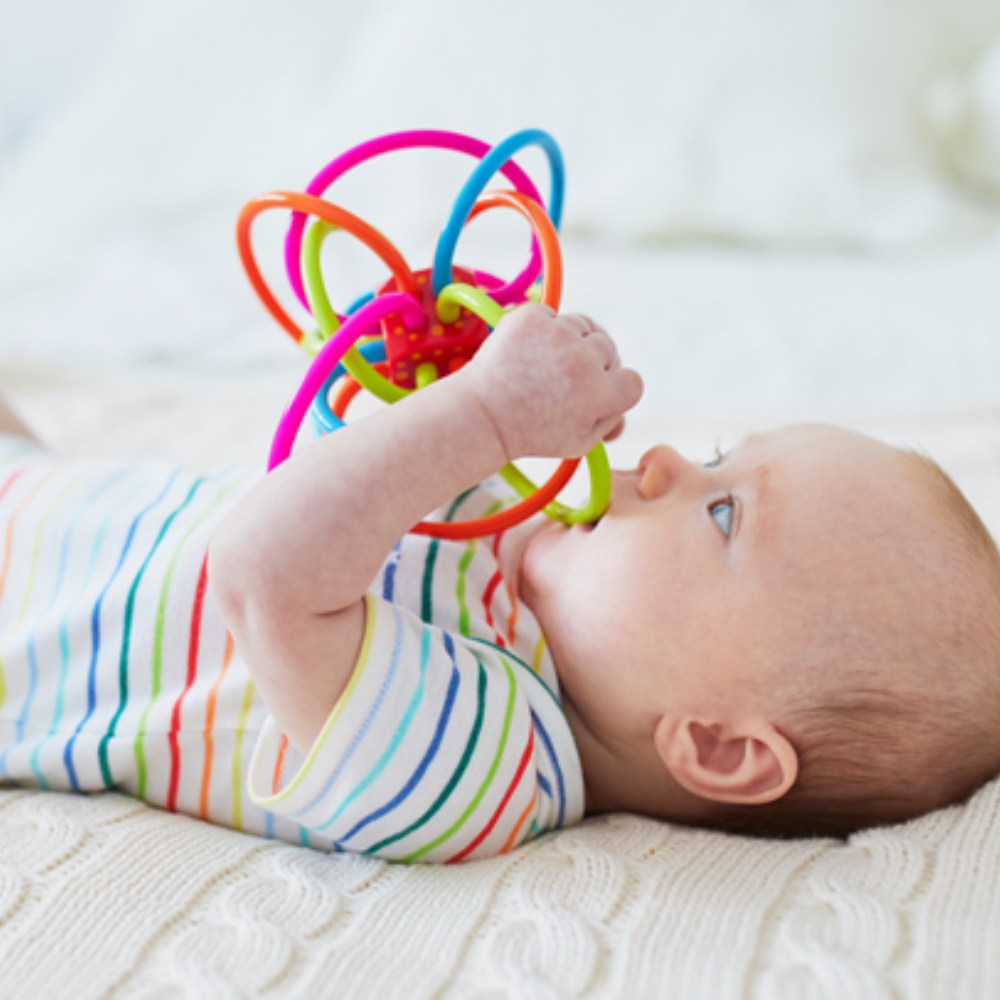
The first year of a baby's life is a critical time for their development. During this time, they go through major physical, cognitive, and social changes. Play is an essential part of this process as it allows babies to explore and make sense of the world around them. It also helps them develop key skills that will serve as building blocks for future learning and growth.
Through play, babies practice important motor skills such as grasping, reaching, and hand-eye coordination.
They also develop cognitive skills like problem-solving, memory, and concentration while playing with different toys. In addition to physical and cognitive benefits, the play also promotes social interaction as babies learn how to share, take turns, and communicate with others through play.
Benefits of Playing With Toys for Babies
The benefits of playing with toys for babies go beyond entertainment. It is a crucial aspect of their overall development and contributes to various areas such as physical, cognitive, social, and emotional growth.
Playing with toys promotes the development of fine motor skills as babies manipulate objects with their hands. It also supports gross motor skills as they engage in activities that require movement and coordination.
Regarding cognitive development, playing with toys encourages problem-solving, memory retention, and critical thinking skills. Socially, it allows babies to interact with others, developing important communication and social skills.
Playing with toys also has emotional benefits for babies. It can be a stress-relieving activity and help them express their emotions safely and positively. Babies can also develop creativity and self-expression by exploring different toys and engaging in imaginative play.
Factors That Determine When Babies Can Play With Toys
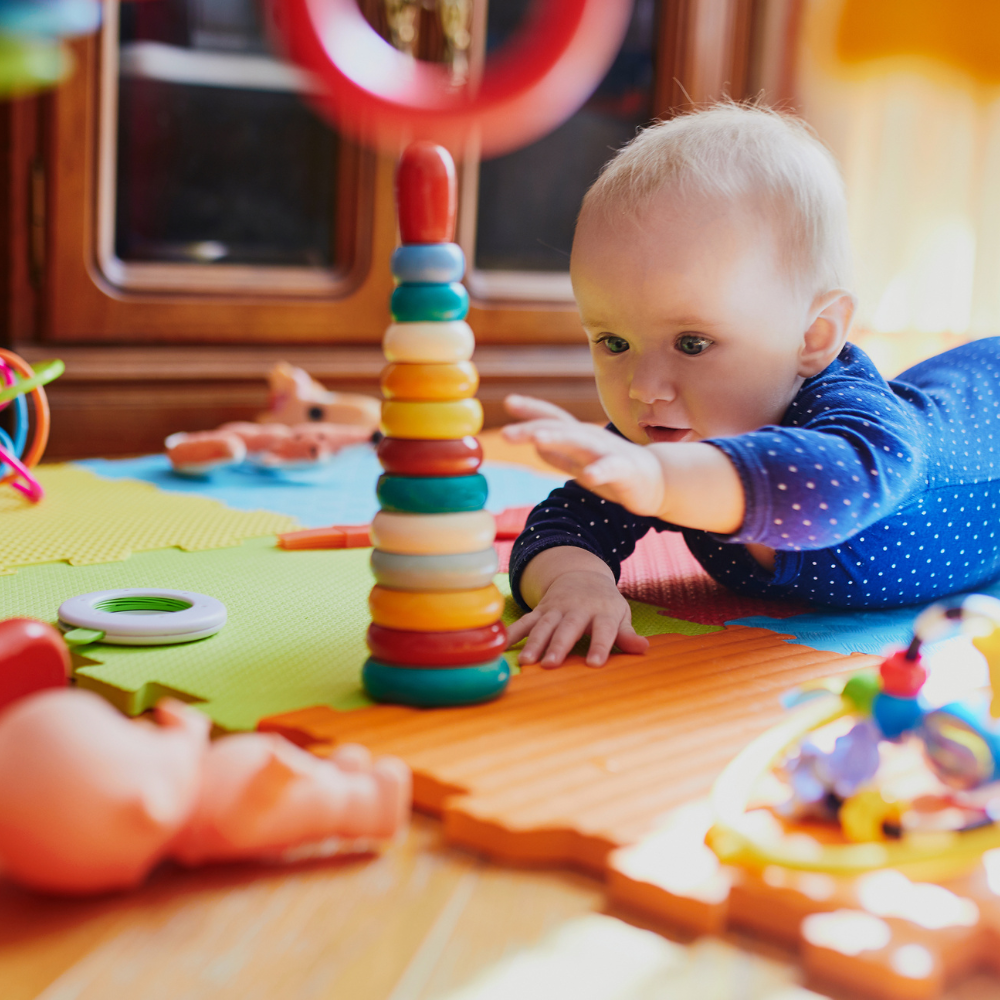
As mentioned earlier, no specific age applies to all babies when it comes to playing with toys. Instead, several factors determine when a baby is ready to engage with toys. These include:
Motor skills development
Motor skills development is a fundamental aspect of a baby's readiness to play with toys. During their first year, infants engage in various stages of motor skill progression, starting with reflexive actions and gradually moving toward voluntary movements.
As babies gain strength and coordination, they begin to reach for, grasp, and manipulate toys, directly supporting their fine motor skills. Engaging with toys encourages practice in grasping objects, shaking rattles, or pushing buttons, helping refine their hand movements.
Additionally, as they learn to crawl, sit, and eventually walk, their interaction with toys also evolves, promoting gross motor skills. This development is crucial, as it enhances not only physical abilities but also cognitive understanding through exploration and play.
Hand-eye coordination
Hand-eye coordination is the ability to use visual information and hand movements simultaneously. Babies need to develop a crucial skill before they can effectively engage with toys.
As their vision improves and they learn to reach for objects, babies start to coordinate their hands' movements with what they see. Initially, they may struggle with grasping small objects or accurately placing toys in specific positions. However, through play and practice, their hand-eye coordination will continue to improve.
Toys such as building blocks, shape sorters, and stacking rings are excellent tools for developing this skill. As babies manipulate these toys, they learn how to use their eyes to guide their hands' movements, promoting hand-eye coordination.
Cognitive development
Cognitive development refers to a baby's ability to process information, think, and learn. As babies grow and experience the world around them, their cognitive abilities also develop. Playing with toys that require problem-solving, memory skills, and cause-and-effect understanding stimulates this growth.
For example, building blocks help babies understand size, shape, and balance while playing. Puzzles encourage problem-solving as babies figure out how different pieces fit together. Sorting toys promote categorization skills as infants learn to group objects by color or shape.
Curiosity and interest in the surrounding environment
Babies are naturally curious and show interest in their surroundings as they grow.
This curiosity is a sign of their developing cognitive abilities and also indicates readiness for playtime with toys. When babies start to reach for objects or show interest in specific toys, it may indicate that they are ready to engage with them.
Parents can encourage this curiosity by providing various age-appropriate toys for babies to explore and discover. It is important to remember that every baby develops at their own pace, so do not worry if your little one isn't showing interest in playing with toys yet.
Physical growth and strength
Physical growth and strength are crucial factors that determine a baby's readiness to play with toys. As babies grow and develop muscles, their ability to hold and manipulate objects improves.
For example, six-month-olds may not have the strength or coordination to grasp a small toy, but they can engage with more complex toys as they develop physically. Parents should select toys suitable for their baby's current physical abilities, ensuring safety and promoting successful playtime.
Ability to sit up and hold objects independently
The ability to sit up and hold objects independently is another important factor in determining when babies can play with toys.
Most babies can sit up with support around four to six months of age, and by seven to nine months, they can sit independently. This allows them to engage with toys more effectively, as they have better control over their bodies.
Moreover, sitting upright also promotes hand-eye coordination as babies use their hands to reach for toys while maintaining balance. It is essential to provide age-appropriate toys that are easy for babies to hold and manipulate at this stage of development.
So these are the main factors that determine when babies can play with toys. As parents, it is important to observe your baby's development and provide suitable toys accordingly, promoting their physical, cognitive, and emotional growth through play. Remember to always supervise your little one during playtime and have fun together!
Average Age for Babies to Start Playing with Toys
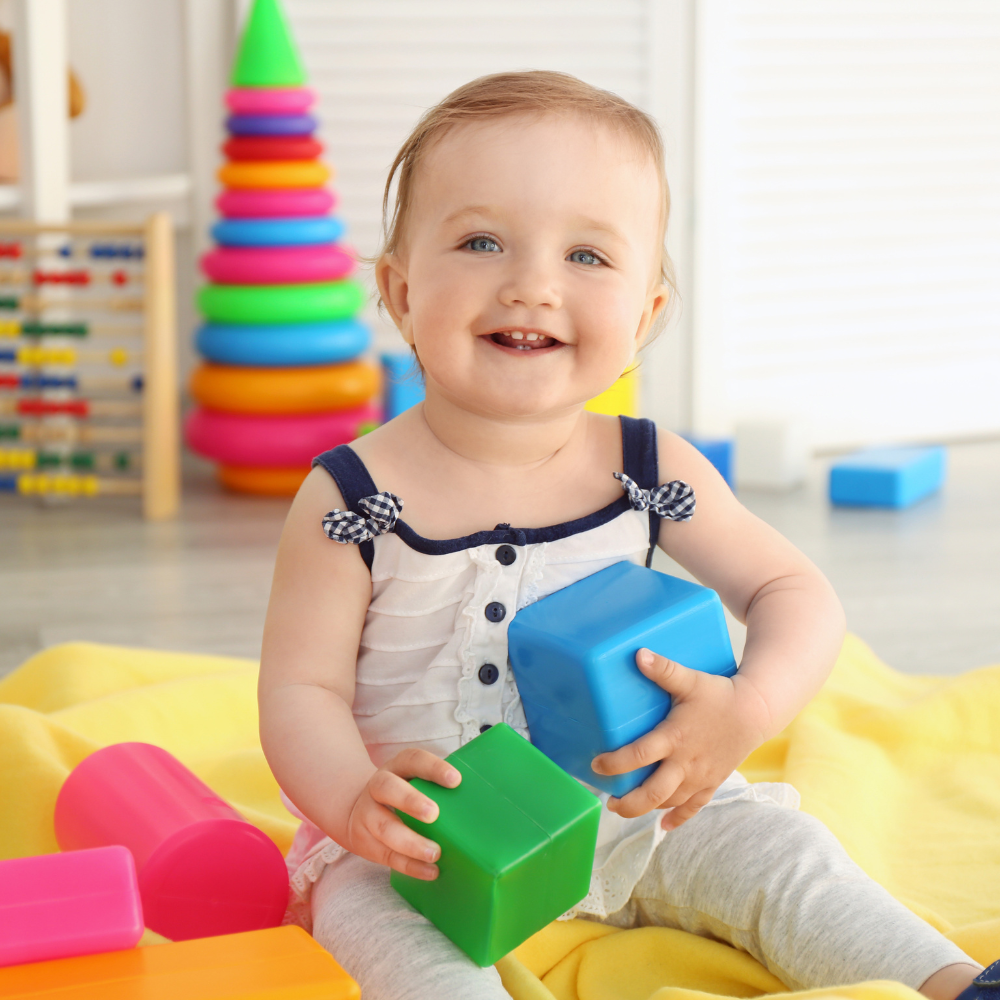
While every baby develops at their own pace, general milestones indicate when they are ready to engage with toys. On average, babies start playing with toys around three months of age when they begin to use their hands voluntarily and show interest in surrounding objects.
By four to six months, most babies can grasp and hold onto objects, making engaging with different types of toys easier. Babies become more physically active between six and nine months and may start crawling or sitting up independently, expanding the range of toys they can play with.
Children typically transition from infants to toddlers around one-year-old and have developed the necessary skills to play with a wider variety of toys. They can walk, run, and use simple gestures or words to communicate their desires and needs, making engaging in imaginative or interactive play easier.
So when your baby shows interest in reaching for objects or manipulating toys, prepare for an exciting journey of exploration and learning through play!
How To Choose Age-Appropriate Toys
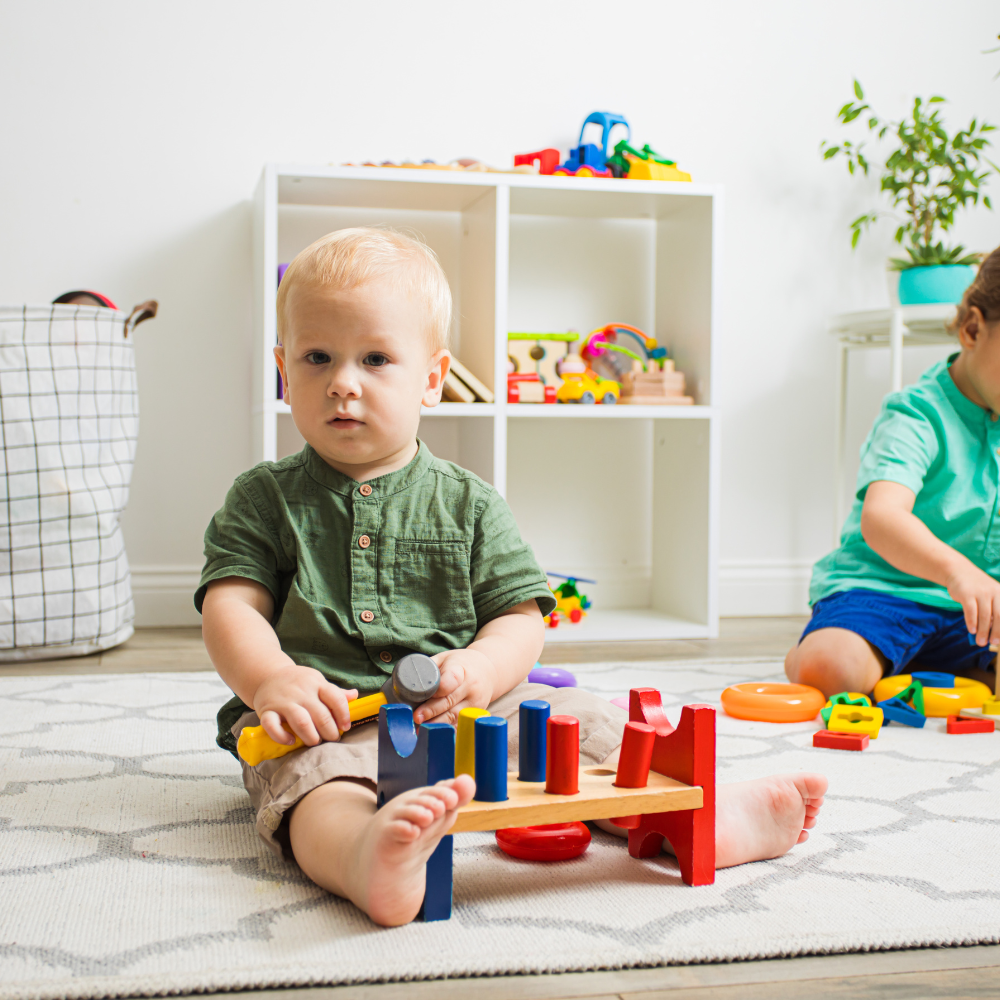
When selecting toys for your baby, it is essential to consider their current developmental stage and abilities. As mentioned earlier, every child develops at their own pace, so be sure to choose appropriate toys for your little one's specific needs.
For infants up to six months old, look for toys that stimulate the senses with different textures, colors, and sounds. Soft plush toys or rattles can help develop motor skills and promote sensory exploration.
Between six and nine months of age, babies become more active and can engage with interactive toys such as push-and-pull toys or shape sorters. These types of toys promote problem-solving and hand-eye coordination.
For toddlers one year and older, look for toys that encourage imaginative play, such as dolls, toy cars, or blocks. These types of toys help develop creativity, social skills, and fine motor skills.
Always supervise your child during playtime and check for any potential hazards. Choosing age-appropriate toys ensures safety and promotes healthy development and learning through play. So be mindful of your baby's developmental stage and provide suitable toys for an enjoyable and beneficial playtime experience!
FAQs
When can babies start playing with toys?
Babies can start playing with toys from birth, but the types of toys should be appropriate for their age. Newborns benefit from toys like dangling toys and soft, sensory toys to stimulate their senses and engage them in playtime and quality time.
What types of toys are best for newborns?
Dangling toys, brightly colored toys, and soft toys that make gentle sounds are the best toys for newborns. These toys help with sensory development and can make playtime more engaging for your baby.
How do you introduce toys to a baby?
Introducing toys to a baby can be done gradually. Start with simple, safe baby toys like stuffed animals, hanging toys, and sensory toys. Observe your baby's reaction to different newborn toys, and use toys with soft sounds and bright colors to keep their interest.
What are the benefits of sensory toys for babies?
Sensory toys benefit babies by stimulating multiple senses, including touch, sight, and hearing. Toys that make soft sounds have different textures and are brightly colored, which can help develop your baby's sensory skills and facial expressions.
Can babies play with the same toys every day?
Yes, babies can play with the same toys every day. Repeated exposure to toys like stuffed animals and shaking toys helps babies become familiar with them, which can be comforting and promote learning through play.
When can babies start playing peek-a-boo with toys?
Babies can start playing peek-a-boo with toys as early as a few months. Interactive toys that can be hidden and revealed, such as those used in peek-a-boo games, are great for engaging your baby and encouraging their social and cognitive development.
Conclusion
In conclusion, the readiness for playtime with toys is determined by a baby's curiosity and interest in their surroundings, physical growth and strength, as well as their ability to sit up and hold objects independently.
These factors vary from child to child, but on average, babies start playing with toys around three months of age. It is important for parents to provide age-appropriate toys that promote their child's development and safety during playtime.
By being mindful of your baby's developmental stage and choosing suitable toys accordingly, you can ensure a fun and beneficial play experience for your little one! So have fun exploring different types of toys with your growing baby and watch them learn and grow through play!
Subscribe to our email newsletter and unlock access to members-only content and exclusive updates.
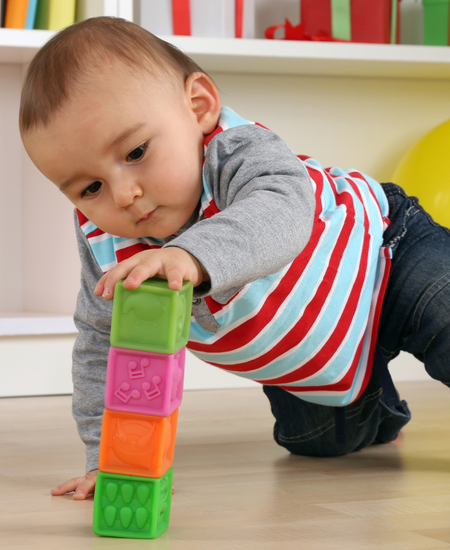
Comments